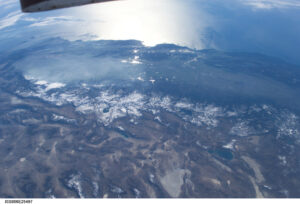

NASA recently reported that Earth’s largest lakes have warmed in response to climate change. While Mono Lake is not a data point in this study, its neighbors to the north—Pyramid Lake and Lake Tahoe—reveal a small upward trend in warming. In December 2009 NASA revealed that Mono Lake, among other lakes in the region, was warming based on nighttime summer water temperatures. Similarly, this study utilized thermal infrared imagery collected from multiple satellites. A small increase in temperature can create significant changes to lake ecosystems. Temperature plays a role in algal blooms, the amount of dissolved oxygen, and the ability of nutrients to mix within the water column. Mono Lake is one of the more unusual lakes due to its extreme chemistry, but Lake Tahoe is also quite unusual for its astonishing water clarity. Climate change and its impacts on Mono Lake, the Mono Basin watershed, and Los Angeles’ aqueduct present a growing concern. The Mono Lake Committee monitors regional climate research and data in order to anticipate changes that may affect the protection and restoration of Mono Lake and its tributary streams. For more information on this NASA study, you can visit the NASA/JPL website.
